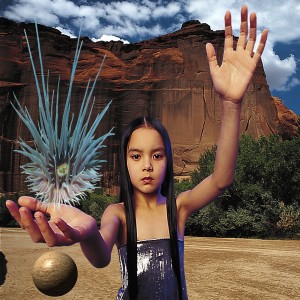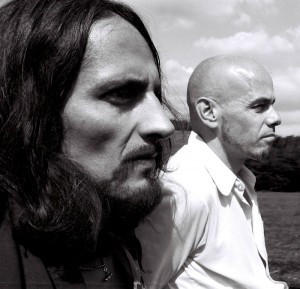1994 was a great year for music. This is becoming more and more clear as 2014 moves on and album anniversaries pop up all over the place. I’m sure this is neither the first nor the last 20th anniversary article you will read this year (I know I’ve got a couple more I intend to write…), but that doesn’t make Lifeforms, the sophomore effort from The Future Sound of London, any less worthy of being written about and listened to. It can’t be recommended enough, nor can it’s brilliance be understated.
The Future Sound of London, a quirky British electronic act whose members consist of Gary Cobain and Brian Dougans, released an extremely successful house and dance album, Accelerator, in 1991. A hit in clubs throughout the UK, Cobain and Dougans were seen as contenders for the next big house act, which was a big deal in the early 90’s, when raves had such high popularity. Soon after, they surprised the public by moving into more textural territory with Tales of Ephidrina, released under the alias Amorphous Androgynous (which they still use for their more psychedelic material). Under the microscope of eager critics and electronic fanatics, Lifeforms was released on May 27, 1994, soon to be considered among the best electronic albums ever recorded.
Within the first few tracks, it was clear that Future Sound of London (FSOL for short) was taking a more experimental route than they previously had. The release, a concept album centralizing around the ideas of organisms and biology, incorporated subtle outdoor noises, giving a strange and organic feel. Within the first few tracks, listeners were sucked in and brought to another world. What made this world so peculiar to listeners was its striking balance between ambient sensations not unlike those created by Eno himself and the big club beats that sporadically demonstrate themselves throughout the album. “Cascade”, with a steady, bubbly beat, rides over a dense jungle whose inhabitants are machines and synthesizers. “Flak” operates similarly, with a surreal picture being painted over a stable pulse, like the heartbeat of a dream-like animal. “Lifeforms”, while still filled with animal cries, sounds not unlike the dance hits from Accelerator. At other times, though, the beats reveal themselves only on occasion, skewing the notion that the song could be danceable. On “Dead Skin Cells”, light piano is drizzled over the sounds of chirping crickets and a foggy synth, picking up a small drum beat during the closest thing the track has to a chorus. “Domain” pays tribute to the great Pachelbel’s Canon in D Major, freely floating among the whispering wind.

- The image of “Witch Girl” holding the “Electronic Brain”, which are two iconic images that would recur throughout FSOL’s work. Part of this image was used for the cover art of Lifeforms.
The album clearly tells a story; the forest is etched in great detail over the span of the two disks, with attention to minute features and ethereal soundscapes. Like a poet chooses his words or a sculptor his cuts, FSOL chooses with great intent the sounds, the timing, the organic rhythm, and the shining melodies that immerse the listener fully in this far-away site. While listening to tracks such as the dark “Spineless Jelly” or “Vertical Pig”, it’s hard not to feel as though you’ve discovered a new species, a new majestic landscape, and that you’re in critical danger in the midst of the mysterious place.
FSOL not only demonstrated that a perfect blend of ambience and dance music was possible, but that it could make for an engaging experience. One of the first concept albums to be developed in electronic music, it was certified Silver in the UK, received across-the-board praise, and continues to inspire awe in listeners. Ranging from the dance tracks like “Omniprescence” to the delicate guitar strumming of “Cerebral”, FSOL offers something to everybody, and more details can be unearthed with each repeated listen. The album closes with the open-ended, urgent, and tribal-sounding “Little Brother”, which can leave listeners with only one thought: To hit play again.
Suggested Listening:







